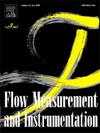油水混合物分析的新方法:基于微带天线的传感器与 GMDH 神经网络相结合
IF 2.3
3区 工程技术
Q2 ENGINEERING, MECHANICAL
引用次数: 0
摘要
微带天线传感器因其紧凑的设计、成本效益和测量复杂混合物的多功能性而逐渐得到石油行业的认可。本研究介绍了一种基于微带天线的新型传感器,它具有一个准圆形谐振器,专门用于测量油水双相混合物中油的体积含量。该传感器在三个不同的共振频率(5.88 GHz、6.96 GHz 和 8.1 GHz)下工作,安装在 3D 打印聚乳酸圆柱形结构中,可准确分析 20 mL 固定体积内 21 种不同体积油水比的光谱响应。为了解决微带传感器经常面临的可重复性挑战,每种混合物都测试了五次,并将数据输入数据处理组方法(GMDH)型神经网络。这种方法增强了神经网络对微小输入变化的抵御能力,确保预测结果更加可靠。该网络成功预测了体积油含量,均方根误差 (RMSE) 小于 0.93,R2 值为 0.99。该传感器的平均灵敏度为 4.26 MHz/εr,在流体表征方面具有很高的效率,特别是在需要精确、实时监测的石油工业应用中。这项研究不仅推动了微带天线传感器技术的发展,还凸显了其在提高石油行业运营效率和决策过程中的实用性。本文章由计算机程序翻译,如有差异,请以英文原文为准。
A novel approach to oil-water mixture analysis: Microstrip antenna-based sensor combined with GMDH neural network
Microstrip antenna sensors are gaining recognition in the oil industry for their compact design, cost-effectiveness, and versatility in measuring complex fluid mixtures. This study presents a novel microstrip antenna-based sensor featuring a quasi-circular resonator, designed specifically for measuring the volumetric content of oil in oil-water biphasic mixtures. Operating at three distinct resonance frequencies (5.88 GHz, 6.96 GHz, and 8.1 GHz) and housed within a 3D-printed PLA cylindrical structure, the sensor accurately analyzes spectral responses for 21 different volumetric oil-water ratios within a fixed volume of 20 mL. To address the challenge of reproducibility often associated with microstrip sensors, each mixture was tested five times and the data was fed into a Group Method of Data Handling (GMDH)-type neural network. This approach enhances the neural network's resistance to minor input variations, ensuring more reliable predictions. The network successfully predicted the volumetric oil content with an Root Mean Square Error (RMSE) of less than 0.93 and an R2 value of 0.99. With an average sensitivity of 4.26 MHz/εr, the sensor demonstrates high effectiveness in fluid characterization, particularly in oil industry applications where precise, real-time monitoring is essential. This study not only advances microstrip antenna sensor technology but also highlights its practical utility in enhancing operational efficiency and decision-making processes within the oil sector.
求助全文
通过发布文献求助,成功后即可免费获取论文全文。
去求助
来源期刊

Flow Measurement and Instrumentation
工程技术-工程:机械
CiteScore
4.30
自引率
13.60%
发文量
123
审稿时长
6 months
期刊介绍:
Flow Measurement and Instrumentation is dedicated to disseminating the latest research results on all aspects of flow measurement, in both closed conduits and open channels. The design of flow measurement systems involves a wide variety of multidisciplinary activities including modelling the flow sensor, the fluid flow and the sensor/fluid interactions through the use of computation techniques; the development of advanced transducer systems and their associated signal processing and the laboratory and field assessment of the overall system under ideal and disturbed conditions.
FMI is the essential forum for critical information exchange, and contributions are particularly encouraged in the following areas of interest:
Modelling: the application of mathematical and computational modelling to the interaction of fluid dynamics with flowmeters, including flowmeter behaviour, improved flowmeter design and installation problems. Application of CAD/CAE techniques to flowmeter modelling are eligible.
Design and development: the detailed design of the flowmeter head and/or signal processing aspects of novel flowmeters. Emphasis is given to papers identifying new sensor configurations, multisensor flow measurement systems, non-intrusive flow metering techniques and the application of microelectronic techniques in smart or intelligent systems.
Calibration techniques: including descriptions of new or existing calibration facilities and techniques, calibration data from different flowmeter types, and calibration intercomparison data from different laboratories.
Installation effect data: dealing with the effects of non-ideal flow conditions on flowmeters. Papers combining a theoretical understanding of flowmeter behaviour with experimental work are particularly welcome.
 求助内容:
求助内容: 应助结果提醒方式:
应助结果提醒方式:


